Time-tested oldest potato variety "Lorkh"
From the time of Peter I, who brought a sack of potatoes to Russia from Holland for cultivation, to our time, this vegetable has gone through a kind of "evolution". At first, it was not accepted, considering it poisonous and exotic, gradually began to grow, increasing the volume.
In the article, we will talk about one of the varieties of potatoes - Lorkh, which appeared a long time ago, but has not lost its popularity among summer residents and connoisseurs of delicious dishes.
The content of the article
Description of the variety
Lorkh has an attractive appearance and excellent taste., for which it gained its popularity among gardeners of several generations.
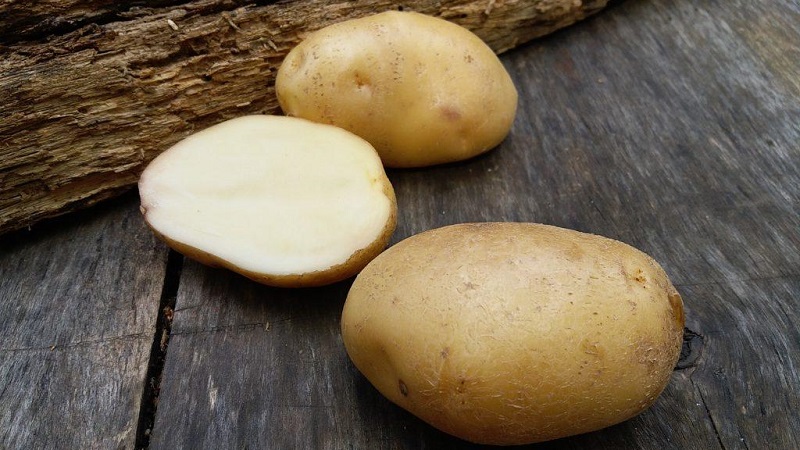
Origin and development
This potato variety was bred in the Kursk region in 1922 at the breeding station in Korenevo by the Soviet breeder Alexander Georgievich Lorkh.
Reference. All-Russian Research Institute of Potato Economy named after A.G. Lorkha bears his name.
Since 1931 this variety has been included in the State Register and for almost 90 years - one of the most demanded.
Distinctive features
The main features of potatoes:
- the color of the tuber is light beige, with natural dark blotches;
- starch content - 15-20%;
- the pulp is creamy white, with an excellent taste;
- eyes are small, in small quantities;
- the mass of a mature tuber ranges from 90 to 120 g;
- high keeping quality of the variety - up to 92%;
- high yield - from 10 to 12 kg / m2.
Description and characteristics of the plant and crop
Lorch bushes are tall, with erect or semi-erect stems... Stems and leaves are light green. Leaves are produced in large numbers. The flowers are purple-pink.
Light beige tubers with a thin, strong skin, smooth, oblong, with slight peeling near the tuber apex. Each bush yields up to 16 potatoes, about 120 g each. The eyes are practically absent and are located shallow and evenly. The pulp is not watery, soft.
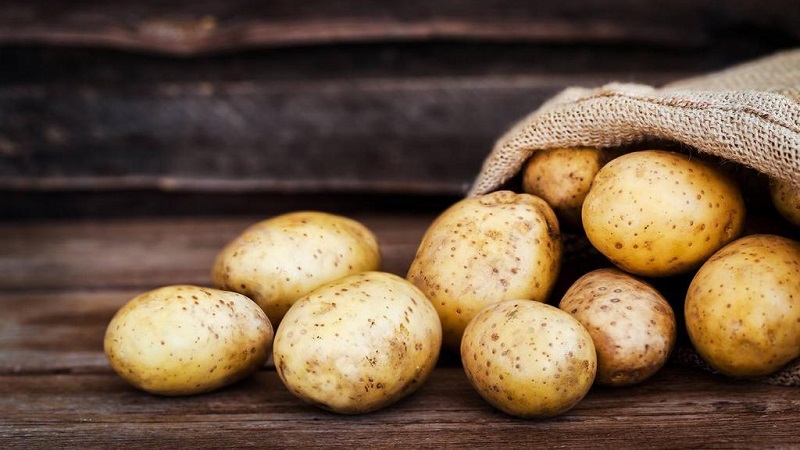
Yield
Many vegetable growers speak of this variety as a high-yielding... Since its inception, potatoes have not lost their leading positions in taste and fruitfulness. The culture is unpretentious and can be grown on any soil, it tolerates frost and drought well. From one bush of the Lorkh variety, up to 2 kg of tubers can be harvested.
How to grow this variety
For planting and growing Lorkha must follow agricultural techniques, prepare inventory and nutrients.
Timing, scheme and landing rules
Favorable soil temperature for planting + 9-10˚С, air - + 13-15˚С, so the right time for landing in different regions:
- for the middle lane - the first half of May;
- in the Urals and Western Siberia - the last week of May - the first week of June;
- in the North Caucasus region - early April.
The planting scheme is maintained based on the characteristics of the growth of tubers... Since Lorkh is a spreading plant, it is necessary to maintain 35 cm between future bushes and 50-70 cm between rows. This scheme leaves the culture room for greenery growth, allows it to be well ventilated, and the bushes do not shade each other.
With such a planting, it is easy to huddle and weed the plants: there is room left to go to the plantings without injuring the stems.
Interesting. Our ancestors determined a favorable time for planting potatoes on birch trees. If the young leaves have already begun to open, then it's time to plant potatoes.
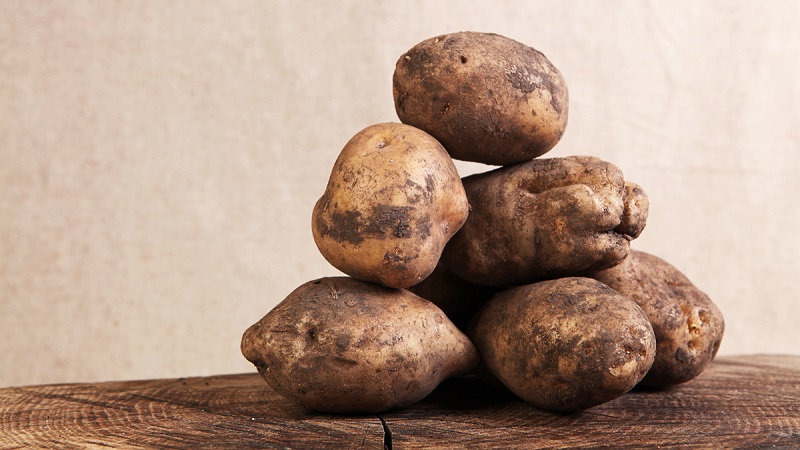
Depending on the depth of the groundwater Lorkh potatoes can be planted in three ways:
- Lunochny - with deep underground waters. The depth of the holes is laid depending on the type of soil - from 8 cm on heavy loamy to 10 cm on loose.
- Trench - in soils that quickly lose moisture.
- Grebnev - in heavy soils when groundwater occurs close to the earth's surface.
Two tubers are placed in one nest, sprouts down at a distance of 8 cm from each other. Top with fertilizer 5 cm thick and cover with a layer of soil. After planting, the potatoes are watered.
Important! It is not recommended to plant Lorkh in separate pieces with eyes, as the yield is significantly reduced.
Care
To get a good harvest, it is necessary to properly care for the plantings. How exactly? We will tell you further.
Hilling
This is one of the most important agrotechnical procedures.because it allows potatoes to access oxygen and moisture, it increases yields by 20-30%.
The procedure is carried out in three stages. The first time - when the height of the tops reached 15 cm, the second - after 15-20 days. The third time the potatoes are hilled after 10 days, while they only trim the embankment and loosen the top layer of the soil.
Watering
The first compulsory irrigation falls on the moment the first shoots appear.... The second is before the setting of buds, the third is during the flowering period, the fourth is immediately after flowering. The water norm for each bush is about 3-4 liters.
Watering is done in the evening or in the morning in the absence of extreme heat. During an abnormal drought, it is recommended to water the potatoes at least once a week, and this should be done between the rows and under the bush.
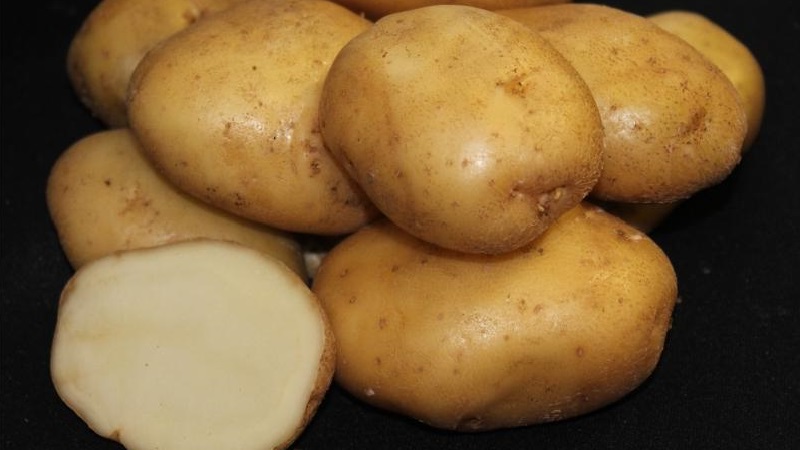
Loosening
It is recommended to perform after the boundaries of the rows are visually determined... Usually, the first loosening occurs at the time of weed formation, and then it is carried out regularly as they appear.
It is advisable to loosen after each watering or rain - this is how the earthen crust is broken, which inhibits the flow of oxygen to the tubers.
Weeding
Produced continuously as weeds appear. It is recommended to remove the grass while loosening, so the procedure is easier. The final weeding should be done when the potatoes have faded.
Top dressing
It is carried out in several stages:
- Top dressing when planting is introduced directly into the ground along with the planted potatoes. For these purposes, a handful of ash or 700 g of humus is used. Instead, you can use a mixture of "Nitrofoski" and bone meal - 1 tbsp. l. 0.5 cups.
- The second feeding is carried out before the first hilling. After watering, it is necessary to add a solution of chicken manure in a ratio of 1:15.
- The last feeding is carried out during the flowering period of the plant with a solution of potassium sulfate - 30 g of fertilizer per 10 liters of water.
The nuances of growing and possible difficulties
Potatoes need constant sunlight, therefore, it is not recommended to plant it in a shady area - the stems will drag along the ground and die as a result. The variety loves wet soils, but you should not overdo it either - the roots can rot.
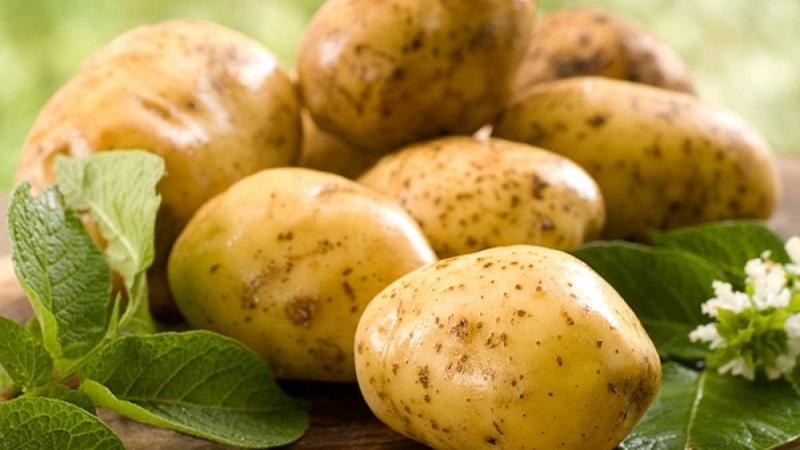
Lorkh grows well in soil where legumes, cucumbers previously grew - they saturate the soil with essential nutrients.
Interesting. The soil after planting oats is also great for Lorkh as the oats disinfect the soil and kill the fungus.
Although Lorkh potatoes are highly immune to disease, they are susceptible to some diseases and pests, due to which the culture may die - we will consider them in more detail.
Rhizoctonia
Fungal disease that can occur at any stage of plant development... It manifests itself in black blotches on the tubers and dry areas on the tops. Can be destroyed with Agat-25K or Baktofit preparations. Infected plants are removed from the site and burned. If rhizoctonia is detected for three years, nightshades cannot be grown on such a site.
Common scab
It manifests itself on tubers with dark tubercles... The vegetable becomes spotty and rough. The yield decreases several times. The appearance of the disease can only be avoided by taking preventive measures: by spraying with a solution of potassium permanganate and copper-containing substances.
Wireworm
Click Beetle Larvae, creating "wire" passages in tubers, are in the soil, so it is almost impossible to find them. The pest feeds on tubers, eating passages in them. In case of severe damage, the plant dies. Diseased tubers are not recommended to be eaten even after complete removal of the passages.
Helps to fight the pest digging up the soil and removing the weeds in which the larvae live. A decrease in soil acidity will also have a positive effect, since the pest loves an acidic environment.
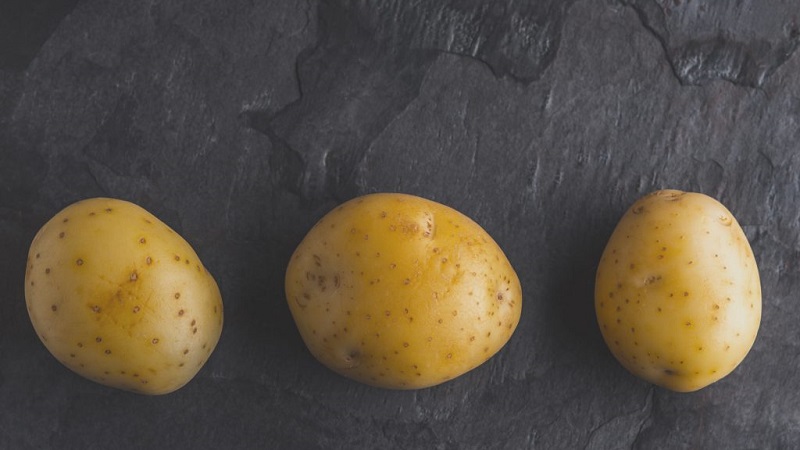
Potato cancer
Fungal disease, which enters the soil from the planting material... It quickly destroys large volumes of seedlings. It manifests itself on tubers as large irregular growths from light yellow to dark brown in color, leading to putrefactive processes. The disease is not cured.
The infected bush is destroyed or buried 1 m deep away from the plantings. Top covered with lime or burned. For prevention, it is recommended to control the seed and process it with boric acid before planting.
The soil in which the cancer-infected potatoes grew can only be reused after a few years.
Collection, storage and use of the crop
The most favorable time for digging Lorkh - late August-early September... Drying and falling tops are a sign that the tubers are already ripe in the soil. About 10 days before the planned digging of potatoes, the tops are cut, leaving 10 cm above the surface of the length of the stems.
Digging is done with a pitchfork - the least traumatic tool for potatoes. After digging up, leave the potatoes for a while to dry. After that, they are cleared of the earth and sorted from diseased and damaged tubers, put into boxes.
Attention! It is necessary to dry potatoes in a shaded place, since exposure to direct sunlight provokes the production of poisonous solanine, which appears on the surface of the potato as a color change to green.
Optimal storage conditions Lorkh varieties - temperature 2-4˚С, good ventilation of the room, humidity up to 85%. It is advisable to periodically sort out the potatoes, removing rotten tubers - this way the harvest will last until spring.
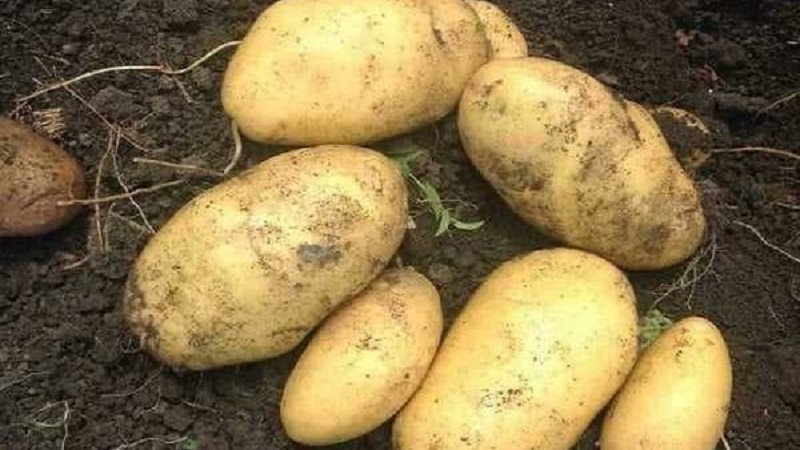
Advantages and disadvantages of the variety
It is not in vain that potatoes Lorkh have retained their leadership for more than 80 years - all thanks to a number of advantages:
- high productivity - fruiting does not depend on weather conditions;
- frost resistance - if one sprout is frozen, the plant replaces it with another;
- tubers are approximately the same size, which facilitates mechanized harvesting;
- excellent taste with an optimal starch content;
- good adaptability to soil;
- keeping quality and transportability.
Minuses:
- poor tolerance of too wet soil;
- medium resistance to infections.
Which regions are best suited for
At the moment Lorkh is officially allowed to grow in such regions.:
- Northwestern;
- Central;
- Central Black Earth;
- North Caucasian;
- Middle Volga;
- Ural;
- Nizhnevolzhsky.
Reviews of gardeners
The Lorkh variety is grown in different regions of Russia, and everywhere there are only positive reviews from gardeners.
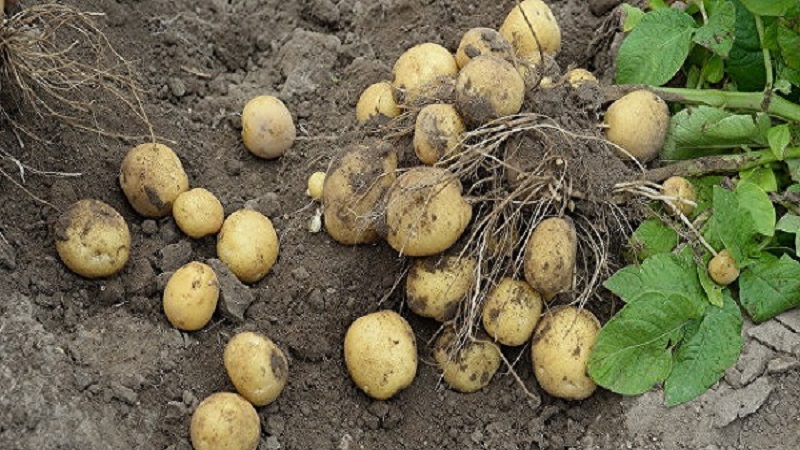
Alexey, Pskov: “I have been planting Lorkh potatoes for several years. I am glad that the tubers are uniform and large, as in the photo on the Internet.It is upsetting that you have to constantly process plants from late blight. And so I always tell my friends and acquaintances that Lorkh is the best of all that I have tried. Delicious, aromatic. The harvest is always successful ".
Milavitsa Petrova, Torzhok: “I have been growing this particular variety for several years. I tried others, but they don't even compare. The tubers are always large, there are few small potatoes. When cooked, they give a wonderful aroma. For five years now I have been collecting a large crop and I am very happy ".
Conclusion
Lorkh potatoes are an excellent choice for a large family that needs a high-quality and abundant harvest. It can become not only the basis for dishes, but also material support, as it is suitable for farming for sale.